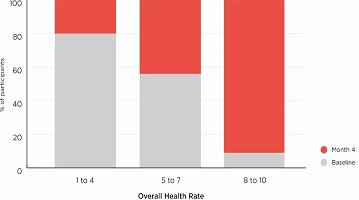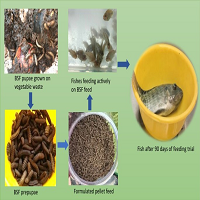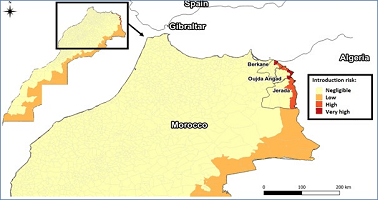INTRODUCTION
Urinary tract infections (UTI) are the most common cause of urinary tract disease in dogs. Approximately 14% of all dogs will acquire bacterial UTI during their lifetimes.1 The most frequently isolated bacterium from dogs with UTI is Escherichia coli (E. coli), followed by Staphylococcus spp., Proteus spp., Streptococcu spp., Klebsiella spp., Enterobacter spp., and Pseudomonas spp.2,3 Suggested drugs for treatment of UTI include amoxicillin-clavulanate, trimethoprim-sulfa, cepahlexin, fluoroquinolones, tetracycline, and ampicillin. Alternative drugs include gentamicin and chloramphenicol.3,4 Fluoroquinolones such as enrofloxacin are particularly effective in treating UTI due to the high drug concentrations achievable within the urinary tract.5 In a study in the U.S, over 80% of urinary tract isolates were found to be susceptible to enrofloxacin.5
Despite several recent publications on bacterial UTI in dogs from Europe and the United States,6,7,8,9 there is scanty information from tropical areas. The results of a study on the canine urine samples from cases suspected of UTI in Grenada, a tropical Caribbean island nation during the period of 2004 to 2009 were published recently by Hariharan et al.10 E. coli was the predominant species associated with UTI, followed by Proteus mirabilis and Staphylococcus intermedius/Staphylococcus pseudintermedius. Among six antimicrobials tested against, resistance was least for enrofloxacin, and most for tetracycline. Monitoring changes in antimicrobial efficacy and microbial resistance guides the empirical use of antimicrobials for the treatment of UTI and helps formulate strategic plans to limit drug resistance.6 The objectives of this study, therefore, were to examine the overall picture of canine UTI in Grenada for the period of 2010-2016, and to identify drugs which are most likely to be effective for empirical use.
MATERIALS AND METHODS
We conducted a retrospective study of all submissions of urine samples from dogs to the diagnostic bacteriology unit of the St. George’s University School of Veterinary Medicine (SGU) for the last 6 years. The laboratory received specimens for routine culture and sensitivity testing from the veterinary clinics in Grenada, including the SGU Small Animal Hospital.
Information on sex, and age of each dog, and treatment administered, if any, and the method of urine collection were collected from the case histories. Urine samples were stored at 5 °C and quantitatively cultured on the same day, and results interpreted as recommended by Osborne.1 Inoculations were done routinely on blood agar (Columbia agar with 5% sheep blood, Remel Inc., Lennexa, KS, USA) and MacConkey agar (Remel Inc., Lennexa, KS, USA), using a calibrated inoculation loop that delivers 1 µl as per the standard method.1 After incubation at 37 °C for 18-24 hours, the plates were examined to determine if cultures were pure or mixed, and the colonies were counted. Cut-off values for significant bacteriuria were: ≥1000 colony forming units (CFU)/ ml for samples collected by cystocentesis, ≥10,000 CFU/ml for samples collected by catheterization, and ≥100,000 CFU/ml for voided urine.2 Mixed growth of more than 2 colony types was considered as indicative of contamination. Bacterial isolates were identified by the standard phenotypic characteristics as outlined by Quinn et al.11 In case of inconclusive results, API bacterial identification strips (Analytab Products, BioMérieux, Mary-lEtoile, France, Europe) were used. Antimicrobial susceptibility testing was performed by the Kirby-Bauer disk diffusion method, as outlined by Quinn et al.11 on Mueller-Hinton (MH) agar. The zone sizes were interpreted as susceptible, intermediate, or resistant, based on the guidelines provided by the Clinical Laboratory Standards Institute (formerly, National Committee for Clinical Laboratory Institute/NCCLS).12 An E. coli strain ATCC 25,922 (American Type Culture Collection), susceptible to all antibiotics, was used as a control.
RESULTS
Of a total of 468 urine samples cultured, 318 were negative for bacterial growth, or had only insignificant growth or mixed growth indicating contamination. Of 150 culture positive samples, indicating urinary tract infection, 109 were from female dogs and 41 from male dogs. The proportion of female dogs with positive bacterial UTI was significantly higher than that of the male dogs (χ2=6.372, df=2, p=0.006). The ages of animals varied from 6 weeks to 16 years, and 90% of animals were above one year of age. Eighty seven percent of urine samples had been collected by cystocentesis. Of 23 dogs with a history of antibiotic use, 8 had a course of amoxicillin-clavulanic acid, 2 enrofloxacin, and 1 ciprofloxacin prior to sample submission. The remaining were on doxycline, amoxicillin, ampicillin-sulbactam, cephalexin, or cefazolin.
Of one hundred and fifty culture-positive samples, none had mixed bacterial infection with 2 species. Table 1 lists the bacteria isolated from the 150 culture-positive samples, and the percentages of various genera and species. Of the 150 isolates, 71.3% were Gram-negative bacteria; the most frequent one was E. coli (28.7%), followed by Proteus mirabilis (20%), Klebsiella pneumoniae (6%) and Pseudomonas aeruginosa (4.7%). Among Gram-positive isolates (28.7% of total), the most common species was Staphylococcus intermedius/Staphylococcus pseudintermedius (7.3%).
| Table 1: Bacterial Species and the Number of Isolates from 150 Culture-Positive Urine Samples of a Total of 468 Samples Tested from Dogs in Grenada 2010-2016. |
|
Bacterial species
|
Isolates # (%)
|
Gram stain id # (%)
|
| Escherichia coli |
43 (28.7)
|
Gram negatives: 107 (71.3) isolates |
| Proteus mirabilis |
30 (20)
|
| Proteus vulgaris |
8 (5.3)
|
| Klebsiella pneumoniae |
9 (6)
|
| Pseudomonas aeruginosa |
7 (4.7)
|
| Enterobacter cloacae |
5 (3.3)
|
| Enterobacter aerogenes |
2 (1.3)
|
| Pasteurella spp |
1 (0.7)
|
| Serratia marcescens |
1 (0.7)
|
| Serratia rubidaea |
1 (0.7)
|
| Staphylococcus aureus |
7 (4.7)
|
Gram positives: 43 (28.7) isolates |
| Staphylococcus intermedius |
11 (7.3)
|
| Staphylococcus spp |
10 (6.7)
|
| Streptococcus canis |
1 (0.7)
|
| Streptococcus uberis |
1 (0.7)
|
| Streptococcus spp |
9 (6)
|
| Aerococcus viridans |
3 (2)
|
| Enterococcus faecalis |
1 (0.7)
|
| Total |
150
|
|
The rates of resistance against 6 antibiotics, that are used to treat UTI in dogs3,4,13 are presented in Table 2. Resistance was least (7.8%) to enrofloxacin, when both Gram-negatives and Gram-positives were considered together. However, when Gram-positives alone were taken into account, resistance was least (4.7%) to amoxicillin-clavulanic acid. Resistance was highest to tetracycline, the rate being 61.7% for Gram-negatives, and 50% for Gram-positives.
| Table 2: Antimicrobial Resistance of Bacteria Isolated from UTI in Dogs in Grenada 2010-2016. |
|
Antimicrobials
|
Resistant Gram-negative isolates/number tested
|
Resistant Gram-positive isolates/number tested
|
Total Resistant isolates/ total number tested
|
|
Cephalothin
|
26/43 (60%) |
4/17 (23.5%) |
30/60 (50%) |
|
Trimethoprim/sulfamethoxazole
|
13/74 (17.6%)
|
8/28 (28.6%)
|
21/102 (20.6%)
|
|
Gentamicin
|
11/96 (11.5%)
|
3/42 (7.1%)
|
14/138 (10.2)
|
|
Tetracycline
|
29/47 (61.7%)
|
8/16 (50%)
|
37/63 (58.7)
|
|
Enrofloxacin
|
6/103 (5.8%) |
5/38 (13.2%)
|
11/141 (7.8%)
|
|
Amoxicillin/clavulanic acid
|
28/90 (31.1%)
|
2/43 (4.7%)
|
30/133 (22.6)
|
With regard to E. coli, which was the commonest species, none of the isolates were resistant to imipenem (Table 3). Among the other drugs, least resistance was seen to ceftriaxone (4%), and most to cephalothin (71.4%). Of 16 isolates tested against cefotaxime, one was found resistant. Eighteen (42%) of 43 isolates showed resistance to 2 or more classes of drugs. Two isolates showed simultaneous resistance to 6 classes of drugs: An aminoglycoside (gentamicin), beta-lactam drugs (ampicillin, amoxicillin-clavulanic acid, cephalothin), chloramphenicol, quinolones (ciprofloxacin, enrofloxacin), trimethoprim-sulfonamide, and tetracycline.
| Table 3: Antimicrobial Resistance* of Escherichia Coli Isolates from UTI in Dogs in Grenada: 2010-2016. |
|
Antimicrobial drugs
|
Number tested
|
Resistant
|
Susceptible
|
Intermediate
|
|
Number (%)
|
| Ampicillin (AM) |
18
|
10 (55.5) |
5 (27.8)
|
3 (16.7)
|
| Doxycycline |
20
|
7 (35) |
11 (55)
|
2 (10)
|
| Cephalothin (CF) |
21
|
15 (71.4) |
1 (4.8)
|
5 (23.8)
|
| Trimethoprim/sulfamethoxazole (TMS) |
30
|
6 (20) |
22 (73.3) |
2 (6.7)
|
| Gentamicin (GE) |
36
|
10 (27.8) |
26 (72.2)
|
0
|
| Tetracycline (TE) |
20
|
10 (50) |
10 (50)
|
0
|
| Chloramphenicol (CL) |
15
|
4 (26.7) |
10 (66.7)
|
1 (6.7)
|
| Enrofloxacin (ENR) |
41
|
3 (7.1)
|
35 (85.4)
|
3 (7.3)
|
| Imipenem |
39
|
0 |
39 (100) |
0
|
| Amoxicillin/clavulanic acid (AMC) |
32
|
11 (34.4) |
18 (56.3) |
3 (9.4)
|
| Ciprofloxacin (CIP) |
42
|
3 (7.1) |
39 (92.9) |
0
|
| Ceftazidime (CFZ) |
38
|
3 (7.9)
|
34 (89.5) |
1 (2.6)
|
| Cefotaxime (CFT) |
16
|
1 (6.3) |
15 (93.8)
|
0
|
| Cefpodoxime (CFP) |
30
|
5 (16.7) |
24 (80)
|
1 (3.3)
|
| Ceftriaxone (CFR) |
25
|
1 (4) |
23 (92)
|
1 (4)
|
| Cephalexin (CFL) |
17
|
8 (47) |
2 (11.8)
|
7 (41.2)
|
| *Multiple resistance to 6 classes of drugs (AM, AMC, CF, CIP, CL, ENR, GE, TE, TMS) was seen in 2 isolates. One isolate was resistant to cefotaxime with a resistance pattern: AM, AMC, CF, CFL, CFP, CFR, CFT, GE, TE, TMS. |
All Proteus mirabilis isolates tested were susceptible to ceftazidime, and gentamicin. Multiple resistance to 2 or more classes of drugs was seen among 47% of P. mirabilis. One of 16 isolates of E. coli and 2 of 14 isolates of P. mirabilis showed resistance to cefotaxime. All Pseudomonas aeruginosa isolates were susceptible to ceftazidime, ciprofloxacin, enrofloxacin, gentamicin, and imipenem, but resistant to tetracyclines. All Staphylococcus intermedius isolates were susceptible to amoxicillin-clavulanic acid and enrofloxacin.
DISCUSSION
Of 468 samples, 150 (32.1%) were positive for significant growth in culture, indicative of bacterial UTI. This is somewhat similar to a recent report from New Zealand where 37.7% of urine samples were positive in culture.14 All 150 culture-positive samples in the present study had growth of a single bacterial species in high numbers indicative of UTI, and E. coli was the most common isolate. These findings are in agreement with the observation that UTIs in dogs are generally caused by a single bacterial species, the predominant being E. coli.15 Several recent studies on UTI in dogs in temperate countries6,7,8,9 have shown that E. coli is the predominant cause of UTI as seen in the present study and our previous study for the period of 2004-2009 in Grenada.10 UTI is more common in female dogs, which is in agreement with the results of the previous study in Grenada. In contrast to the results of a study on bacteria from UTI in dogs in Sweden,7 drug resistance is high in the dogs in Grenada. Antimicrobial resistance in E. coli is of concern in this tropical island, except for imipenem, which is a last-resort drug for multidrug-resistant E. coli.16 Over 40% of the E. coli isolates in this study showed multiple drug resistance to 2 to 6 classes of drugs, and one isolate was resistant to cefotaxime, which indicates resistance to extended spectrum cephalosporins.7 This is of concern in small animal medicine as well as of public health significance when the genes are transferable. Overall, enrofloxacin still remains the most effective drug against urinary pathogens from dogs in this country, more than 92% of all isolates being susceptible. This finding is in agreement with that of a study done in the United States.5 Fluoroquinolones are among the few drugs of choice for treatment of bacterial urinary tract infections in dogs, including those due to Pseudomonas aeruginosa.13 The disk diffusion method underestimates the effectiveness of some drugs, because it is based on expected serum concentrations. Several drugs, including enrofloxacin reach much higher concentrations in the urine.4 Although, over half the isolates were resistant to tetracycline, concentrations of doxycycline attained in the urine of dogs can inhibit majority of urinary pathogens.17 In any case, urine culture remains the “gold standard” for diagnosis of urinary tract infection, and culture and susceptibility testing should particularly be performed in cases that do not respond within 7 days of therapy.3 Prior to obtaining culture and sensitivity results, Gram’s stain may allow identification of the pathogen as Gram-positive or Gram-negative, and this will be helpful in determining initial therapy.13
In conclusion, this retrospective study on urinary pathogens from dogs for the period 2010-2016 confirms the results of our previous findings for 2004-2009 that E. coli is the most common bacterial species, and resistance to enrofloxacin is minimal. However, emerging multi-drug resistance such as resistance to cefotaxime, which is generally associated with the production of extended-spectrum beta-lactamases7 is of concern. Prudent use of antimicrobial drugs, and continued monitoring of trends in drug resistance are important in controlling bacterial resistance to antibiotics.
CONFLICTS OF INTEREST
The authors declare that there is no conflict of interest.







